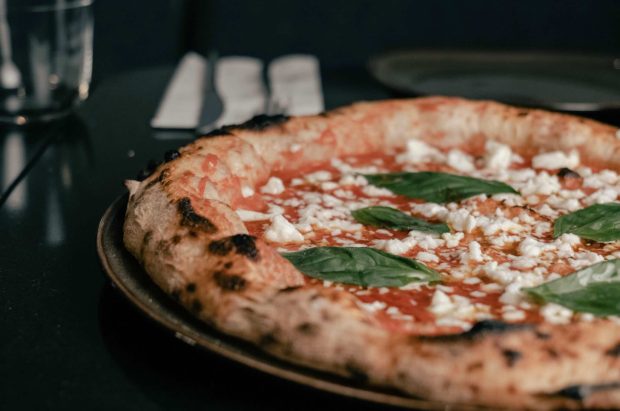The holiday season is fully upon us, and if you’ve been kind enough to volunteer to host one of the celebrations this year, you’ve got quite a lot on your plate—literally and figuratively! It can be extremely enjoyable to put on an event, but it also creates a lot of stress, what with all the meal planning, shopping, decorating, stocking up on supplies, finalizing the guest list, and too many other holiday-hosting tasks to list.
Another area of concern for holiday hosts? How to plan a festive and delectable food and drink menu that accommodates the special diets of some of your guests. If you want to be the best host you can be (and we know you do!), you’ll want to create a spread that makes everyone feel recognized and included. Aunt Jess with the peanut allergy? Your neighbor Joe, who’s gluten-free? Your vegetarian colleague Miranda? All of them will feel welcome and well cared for by incorporating inclusive offerings into holiday gatherings.
The Importance of Inclusive Holiday Hosting
Holidays and celebrations often center on eating together with family and friends. But with any large group of people, you’re likely to encounter dietary restrictions that need to be followed due to allergies, food intolerances, medical conditions, lifestyle choices, and more. The National Institutes of Health reports that between 1997 and 2011, the prevalence of food allergies in U.S. children increased by 50 percent. It’s also been noted by various sources, such as NCSoultions, that many people, especially the younger generation, are sober or sober curious.
Factors like these impact what you should and should not plan to serve to your guests to take into consideration their needs and preferences. Here are some tips that will help avoid accidents, make sure no one goes hungry or thirsty, and lay the foundation for creating a memorable holiday experience for all!
Tips for Inclusive Holiday Hosting
1. Ask Guests Ahead of Time
Open communication from the start will go a long way toward ensuring that all your guests’ needs and preferences can be met. So when you first send out your invitations, ask directly if they have any restrictions you should know about—either in an email, with a phone call, or by creating a questionnaire they can fill out and send in with their RSVP. Sample questions can include listing any allergies (like shellfish or nuts), any health conditions that affect diet (like celiac disease or diabetes), any dietary intolerances (such as lactose or gluten), and any lifestyle choices (such as sobriety or a halal or kosher diet).
As an added step, once you’ve mapped out your menu, you can check in with any guests with dietary limitations just to confirm that they’ll be okay with what you’ve planned. This will make every person on your guest list feel seen, heard, and valued—a great start to any holiday celebration!
2. Create an Intentional and Diverse Spread
Although building a holiday menu with a range of options will require more planning and labor, your efforts won’t go unnoticed. Still, try to use your time most wisely with some pre-planning steps and shortcuts. For example, hold off on compiling your menu until you’ve heard back from guests about what they can and cannot consume. Once equipped with this information, do an online search for recipes that do not contain the restricted items—there are many sites that offer specific types of recipes (like allergy-friendly items) and many outlets that specialize in guiding cooks on how to avoid common allergens.
Another possibility to consider is serving a smorgasbord type of spread in lieu of a full-course sit-down menu that may require you to make multiple large-sized versions of the same dishes. Instead, if you make a wide selection of smaller plates and bites, it’s a great way to make sure that there will be something for everybody: both a vegan and nonvegan dip, both gluten-free and non-gluten-free rolls, a side dish that uses dairy products and another side that does not. You can make all the items in your spread yourself—swapping in easily found substitutions, like alternative milks or flours—or you can purchase premade items to eliminate all the guesswork.
Take your dessert table, for example. Everyone loves a variety of choices to appease their sweet tooth, and companies like Sweet Diplomacy are happy to ship to you any and all of their specialty dessert products—many of which are nut-free, dairy-free, and vegan—including blueberry pie bars, cake in a jar, and paleo brownies. (Check out this amazing holiday box featuring brownies, chocolate chip cookies, gingersnapperdoodle cookies, peppermint chocolate cookies, and peppermint chocolate muffins, and this incredible alternative to pumpkin pie.) Not only will you be supporting small businesses, but all of your guests will be treated to new options they might otherwise be unaware of!
3. Avoid Cross-Contamination
Serious allergies can be lethal if individuals are exposed to any amount of an allergen. Peanut butter is a good example—though it’s so pervasive in the American diet, even trace amounts of peanut can be deadly to some, and thus extremely careful measures need to be taken to avoid cross-contamination of foods.
If you’ll be cooking at home for guests with dietary restrictions, prep your kitchen with a thorough cleaning. Vigorously wipe down all surfaces with a commercial-grade cleaner such as Clorox or Lysol. Wash all pots and pans, dishes, and utensils being used on a normal dishwasher cycle or wash them by hand with hot and soapy water, scrubbing thoroughly. When washing hands, use warm or hot, soapy water—hand sanitizer won’t cut it to remove allergens. When cooking, prepare allergy-friendly dishes first, completely separate from other ingredients you’ll be using and items you’ll be making. Then, finally, when serving, use separate serving utensils for the specially prepared items, maybe even setting them in a separate place.
4. Label Dishes Clearly
Labeling your dishes not only adds a lovely touch to your holiday table, but it’s essential when hosting guests with food sensitivities, who must know what they can and cannot eat from all that lies before them. Include ingredients on the labels so there’s no confusion about possible allergens. It’s also a good idea to verbally introduce what you’re serving to your assembled guests before dining commences, not just to reinforce your written labels, but to let anyone ask questions.
Food labels can be quite elegant and fancy nowadays! So make them a decoration rather than a direction by using an online template that matches your theme and compliments your decor. Have fun searching through the various designs you can just send to your home printer to enhance your tablescape!
It takes a little extra effort to accommodate the growing list of dietary needs of your guests, but when you offer diverse dishes, avoid allergens, and label foods, it makes a tremendous difference to all the people who are excited to join your event. Actually, it makes more than a difference—it’s a holiday gift. A very thoughtful, considerate, attentive, and appreciated gift that will make your holiday affair more joyous and welcoming than ever!







